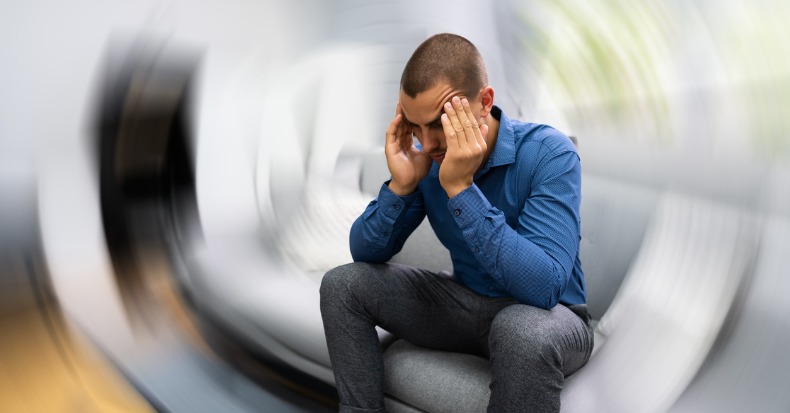In addition to more common symptoms like neck pain and stiffness, the whiplash-associated disorders (WAD) patient may also experience vertigo or dizziness. However, the link between vertigo and WAD is somewhat controversial. In 2021, a team of international researchers published a meta-analysis (a review of previously published studies) entitled “The Enduring Controversy of Cervicogenic Vertigo, and its Place among Positional Vertigo Syndromes.” In the paper, the authors note that despite considerable scrutiny and research, little progress has been made to clarify the cause and underlying mechanisms of the disease.
The term “cervicogenic” implies that the problem stems from the cervical spine. A cervicogenic vertigo (CV) patient will either experience neck symptoms in addition to dizziness or will have a history of neck injury that precedes the onset of vertigo. An issue the authors cite is that most “neck” injuries are not focal but involve more than just the neck. Whiplash is a great example, as post-WAD vertigo usually involves several structures that can affect balance, including the otolith system (inner ear/balance organ), the brain (cortical and subcortical structures), the brainstem, the vertebral arteries, and the various structures in the neck and upper back.
Despite many attempts (and failures) at finding a single diagnostic test to solidify the diagnosis of vertigo, the good news is that chiropractic care helps a lot! There is strong evidence that spinal manipulation of the neck and midback helps by stimulating the mechanoreceptors located in the neck muscles and ligament insertions. More specifically, the muscle spindle cells located in the deep short neck muscles and the sensory fibers connecting the facet joint proprioceptors with the spinal cord that feeds information to and from the vestibular (balance) system and other parts of the brain all play important roles in helping to resolve vertigo in WAD patients.
In 2011, a group of Australian researchers uncovered 14 prior studies that reported improvement in dizziness using both unimodal (manual therapy only) or multimodal (more than one) therapy interventions. They cited improvements in postural stability, joint positioning, range of motion, muscle tenderness, neck pain, and vertebrobasilar artery blood flow velocity in their systematic review. A more recent 2020 systematic review that included 22 clinical trials identified manual therapy, vestibular rehab (eye exercises), Tai Chi, and canal repositioning exercises as effective for the management of cervicogenic vertigo. Doctors of chiropractic may incorporate these methods into a treatment plan for the CV patient as well as team up with allied healthcare providers when appropriate.
